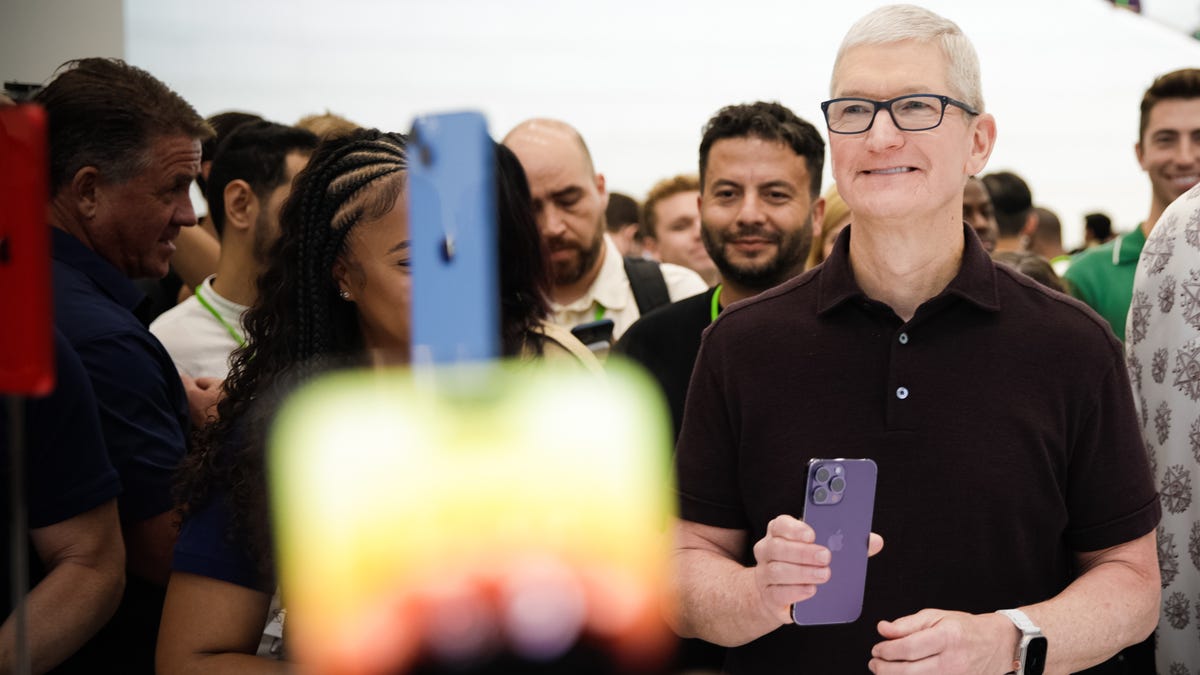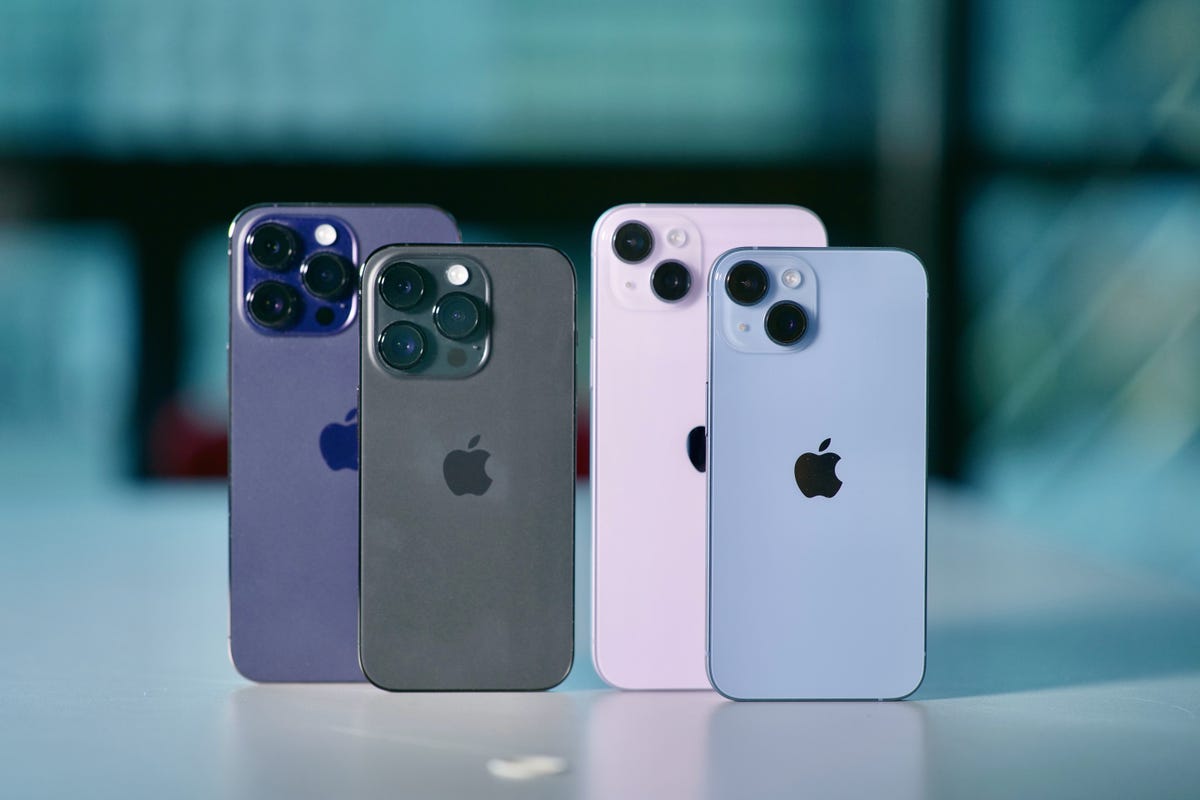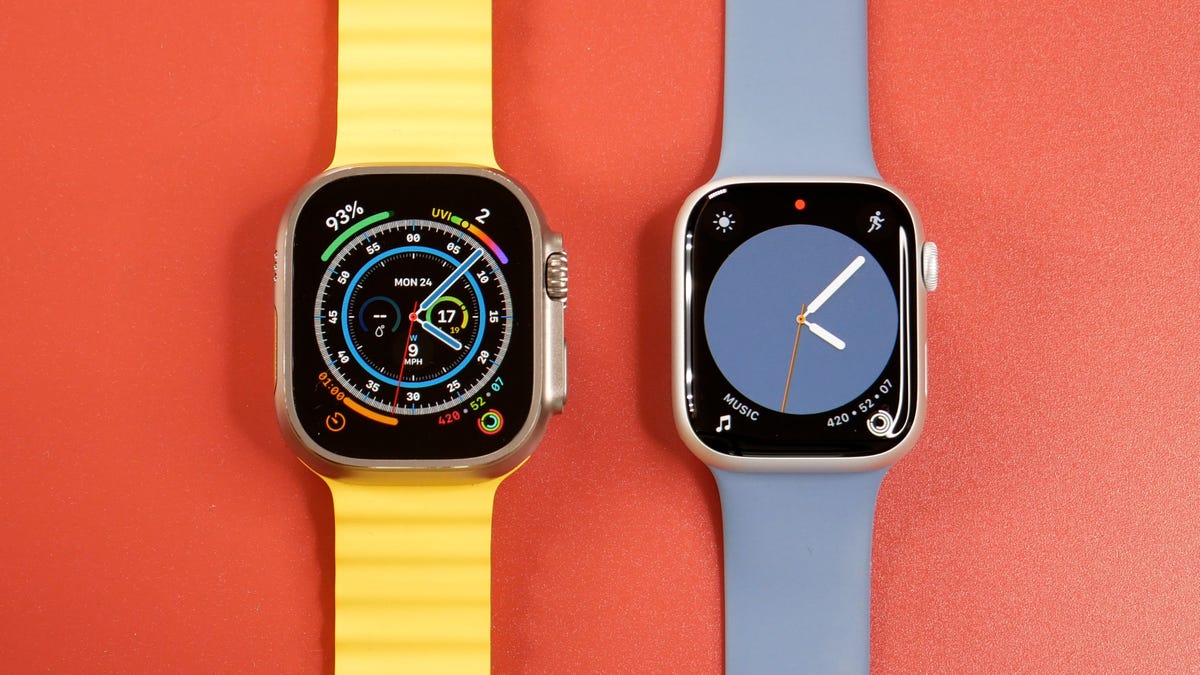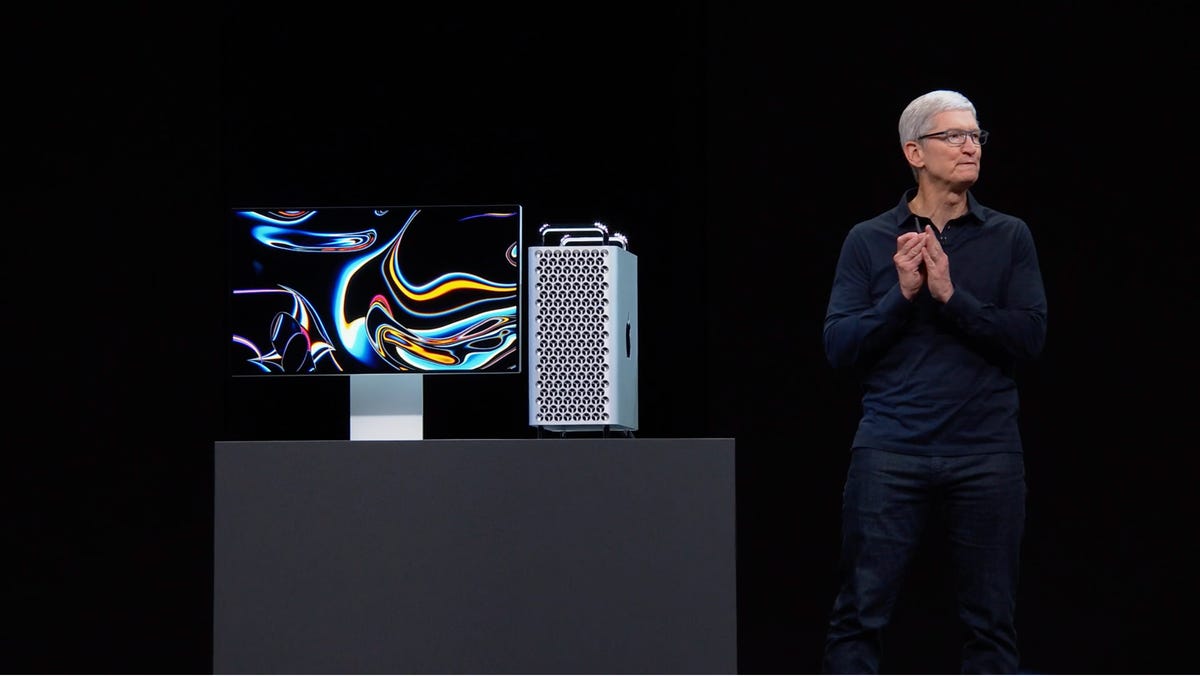Technologies
iPhone 15 and Every Other Apple Product to Expect in 2023
A new iPhone with USB-C charging is one of the many products we could see from Apple this year.

You never really know what to expect from Apple when it comes to its product launches. However, the company tends to release certain products on a regular schedule, providing possible clues about what’s to come. Leaks and rumors also paint a picture of potential gadgets we may see throughout 2023, such as the iPhone 15 and Apple’s long-rumored «mixed-reality» headset.
If the reports turn out to be accurate, 2023 could mark several firsts for Apple’s product lineup. We may see the company’s first AR/VR headset, the first iPhone with USB-C and the first 15-inch MacBook Air, for example. As for other products like AirPods, the Apple TV and the iPad, Bloomberg reports we likely won’t see major changes to those product lines this year.
The debut of a mixed-reality headset would signal an entirely new product category for Apple, while the other updates suggest Apple is further optimizing its devices to contend with Android and Windows competitors that offer bigger screens and universal USB-C charging.
Apple has already released several new products this year, including a new yellow version of the iPhone 14, an updated HomePod, a Mac Mini with the M2 and M2 Pro chips, and MacBook Pro computers with the new M2 Pro and M2 Max.
Here’s a look at what we’re expecting in 2023 based on Apple’s previous launches, rumors and leaks so far. Apple did not respond to a request for comment for this story.
iPhone 15 lineup


From left to right: the iPhone 14 Pro Max, iPhone 14 Pro, iPhone 14 Plus and iPhone 14.
Celso Bulgatti/CNETApple usually launches new iPhones in September, and this year will likely be no different. Among the most significant changes we’re expecting to see in the iPhone 15 is the switch from the Lightning charging port to USB-C. That’s because there are new rules requiring tech products sold in Europe to support USB-C by 2024. Still, it’s unclear whether Apple will fully embrace the transition to USB-C across the entire iPhone 15 lineup, or if it will make a region-specific model for Europe.
Another potential update could include the Dynamic Island’s arrival on standard non-Pro iPhone 15 models, Ross Young, CEO of Display Supply Chain Consultants, tweeted in September. At the same time, Apple could add more features to the iPhone 15 Pro that differentiate it from the base models. Such features could include a new periscope camera with better optical zoom for the iPhone 15 Pro Max and solid-state buttons for both Pro phones, according to TF International Securities analyst Ming-Chi Kuo.
Read more: I Want to See These 6 Features on the iPhone 15
Apple AR/VR headset


Apple is rumored to release a mixed-reality headset this year.
James Martin/CNETApple’s long-anticipated mixed-reality headset could finally make its debut in June, according to Bloomberg, marking Apple’s first major expansion into a new product category since the Apple Watch. The headset is expected to blend elements of augmented reality, which lays digital graphics over real-world environments similar to the smartphone game Pokemon Go, and virtual reality, which envelopes users in 360-degree graphics like the $400 Meta Quest 2.
But don’t expect Apple’s headset to come cheap. The device could cost $3,000 and will run on a new type of software that’s essentially a 3D version of the iPhone’s interface, Bloomberg reports. Expect it to be powered by Apple’s M2 chip, which can be found in its current MacBook lineup, the report says. Although Bloomberg reported that Apple could introduce the headset in June, a tweet from Kuo suggests mass production of the device may have been delayed.
Tech giants from Meta to Sony to Microsoft have all tried their hand at virtual or augmented reality. But there’s an expectation that Apple’s first VR product could popularize the technology, since the company has a long track record of doing so with other products.
«I think Apple is going to be a big help to the market kind of like it has with, let’s face it, smartphones, tablets and smartwatches,» said Ramon Llamas, a research director at the International Data Corporation.
Apple Watch Series 9


The Apple Watch Ultra (left) and Apple Watch Series 8 both launched last year.
Lexy Savvides/CNETLike clockwork, Apple typically releases new Apple Watch models alongside its new iPhones in the fall. This year, however, we may see a more modest update than usual. Bloomberg reports that we shouldn’t expect to see significant changes to the Apple Watch this year. What that means is unclear, but it’s possible the watch could include routine updates like performance enhancements rather than significant new health-tracking features.
That falls in line with the pattern that Apple has followed in recent years. Other than the addition of temperature sensing and car-crash detection, the Apple Watch Series 8 is very similar to the Series 7. Apple has also introduced more new features through software updates rather than hardware changes in recent years, such as the ability to track sleep stages that arrived in WatchOS 9. But I’m hoping the Series 9 inherits some features from the Apple Watch Ultra, especially its handy Action button, which makes it easier to jump right into a workout.
There haven’t been many rumors or reports about whether to expect updated Apple Watch SE or Ultra models in 2023. But since Apple doesn’t always release special-edition products on an annual cadence, it wouldn’t be surprising to see Apple skip those updates this time around.
Read more: All the Apple Watch Series 9 Rumors We’ve Heard So Far
A new iMac


The 2021 iMac is powered by Apple’s M1 chip.
Sarah Tew/CNETFans of Apple’s colorful all-in-one computer may have something to look forward to this year. The company’s next iMac is at an advanced development stage, meaning it could arrive in the second half of this year, according to Bloomberg. The refreshed computer will likely run on Apple’s rumored M3 processor, which would be a step up from the M2 chip powering the current MacBook Pro and MacBook Air. It’ll have a 24-inch screen like the 2021 edition and will be available in the same color options, but will have some internal design changes, according to the report.
Mac Pro with M2 Ultra


The 2019 Mac Pro can cost north of $50,000.
Apple/Screenshot by Alexandra Able/CNETApple is also readying a new version of its top-of-the-line Mac Pro that would run on a chip called the M2 Ultra processor, likely a successor to the M1 Ultra, according to Bloomberg. That would mark a departure from the current model, which debuted in 2019 and runs on Intel’s Xeon processors. The chip will reportedly have 24 CPU cores, 76 graphics cores and 192GB of memory.
The $5,999 Mac Pro is Apple’s high-end desktop computer aimed at professionals. It’s the last remaining Mac in Apple’s current lineup that doesn’t include the company’s own silicon. The report suggests it will launch between late spring and summer, meaning we might see it at Apple’s Worldwide Developers Conference in June.
A 15-inch MacBook Air


The M2 MacBook Air is «the most universally useful laptop you can buy,» according to CNET’s Dan Ackerman.
Dan Ackerman/CNETApple’s lightweight laptop will reportedly be available in a 15-inch size for the first time this year. Bloomberg reports that a 15-inch MacBook Air is in Apple’s 2023 product roadmap, although it’s unclear whether this machine will run on the company’s expected M3 chip. A new 13-inch MacBook Air is also said to be in the works.
These two laptops are also expected to arrive in the late spring or summer, so we should be hearing about them in the coming months if Bloomberg’s report is accurate.
All told, the rumors, leaks and reports suggest 2023 could be a pivotal year for Apple’s computing lineup. If Apple does announce its first mixed-reality headset, we’ll get a glimpse at the company’s vision for the future of computing. Apple CEO Tim Cook has been vocal about the potential he sees for augmented reality, but we haven’t seen dedicated Apple hardware for providing those experiences yet. The arrival of Apple silicon in the Mac Pro would also mark the completion of Apple’s transition to its homegrown Mac chips within its current lineup.
Technologies
The Black Friday Gaming Deals Are Here. Shop Now and Save Big on PlayStation, Xbox and Alienware
Technologies
Looking for a Free iPhone? Verizon Will Basically Hand You One With This Black Friday Offer
Technologies
Smartphone vs. Dumb Phone: Why People Are Going Basic
Here’s how to ditch your smartphone for a dumb phone. It’s digital detox done right.

Over the past couple of decades, smartphones have become an integral part of our lives. According to the Pew Research Center, about 91% of Americans own a smartphone. Statista reports that the number of global smartphone owners is estimated to reach 6.1 billion in 2029. For many, a smartphone is an always-on internet device that keeps us connected to the world.
But there are also significant downsides to having one. If you’re concerned about how much time you spend on your phone, you aren’t alone: Some people feel addicted to their smartphones, checking their email and social media feeds hundreds of times a day. Perhaps you find yourself doomscrolling through the news or wasting time on mindless apps and games rather than being productive at work or spending quality time with your family. Sure, you could simply limit your screen time, but that takes willpower that you might not have.
This rise in this obsessive behavior toward smartphones explains the resurgence of so-called dumb phones in recent years. Sometimes referred to as feature phones, dumb phones are essentially stripped-down cellular devices that lack the bells and whistles of modern smartphones. Some only let you call and text, while others have a few more features such as a camera or a music player. Dumb phones typically offer only the most basic of features, minimal internet and that’s about it.
If that intrigues you, read on. In this guide, we’ll highlight the different kinds of dumb phones on the market, what you should look for when shopping for one, and whether a dumb phone is even right for you.
The differences between a dumb phone and a smartphone
A smartphone is essentially a tiny computer in your pocket. A dumb phone lacks the apps and features that smartphones have. More advanced dumb phones, or «feature phones,» offer a camera and apps like a calendar or a music player. Some even have minimal internet connectivity.
Many dumb phones are reminiscent of handsets with physical buttons from decades ago. Others have a T9 keypad where you press the numbers with the letters on the keypad and the phone «predicts» the word you want.There are even feature phones with touchscreens and more modern interfaces.
What should you look for when getting a dumb phone?
The dumb phone that’s best for you will depend on the reason you’re getting it. Do you want to go without internet access entirely and do it cold turkey? Then, perhaps a basic phone is what you want. Basic phones are also great if you just want a secondary emergency backup handset. Do you want at least some functionality, like Wi-Fi hotspot capabilities or navigation directions? Then look into «smarter» dumb phones that have those features.
Alternatively, if you think you still need certain smartphone apps like WhatsApp or Uber, you could look into «dumbed down» Android phones with smaller screens and keypads (sometimes called Android dumb phones). They don’t qualify as dumb phones technically, but they’re often seen as an in-between solution for those who can’t quite commit to a lifestyle change.
What are the different kinds of dumb phones on the market?
As more people seek smartphone alternatives, a large number of modern dumb phones have emerged on the market. If you’re on the hunt for one, we recommend using Jose Briones’ excellent Dumbphone Finder, which lets you filter and browse a dizzying array of choices based on your preferences and network provider. We also suggest perusing the r/dumbphones subreddit, where you’ll find a community of dumb phone enthusiasts who can assist you in your dumb phone journey.
Here are a few different kinds of dumb phones that caught our attention.
Smarter dumb phones
If you have a tough time letting go of your smartphone, there are a few smarter dumb phones on the market that might be a good gateway into the smartphone-free world. They often have touchscreen interfaces and more features you’d find on smartphones, like a music player or a camera.
Perhaps the smartest dumb phone on the market right now is the Light Phone 3, which has a 3.92-inch OLED screen and a minimalist black-and-white aesthetic. Its features include GPS for directions, Bluetooth, a fingerprint sensor, Wi-Fi hotspot capabilities, a flashlight, a 50-megapixel rear camera, an 8-megapixel front-facing camera and a music player. It also has 5G support, which is something of a rarity among dumb phones.
However, it’s expensive at around $700, which is almost the same price as a higher-end smartphone. Light also sells the Light Phone 2, which lacks cameras and a flashlight, but it’s much cheaper at $300 (about the price of a midrange smartphone). It uses an E Ink screen instead of OLED. However, some reviews have said that the texting speed is pretty slow.
Another touchscreen phone that’s similar to an e-reader and is fairly popular with the dumb phone community is the Mudita Kompakt. It has wireless charging, an 8-megapixel camera, GPS for directions, a music player, an e-reader and basic apps including weather, a calendar and more.
Barebones phones
On the other hand, if you’re ready for a full digital detox, then you could consider just a basic phone that lets you call, text and not much else. Simply harken back to the phones of decades ago and you’ll likely find one that fits that description.
One of the major brands still making basic phones is HMD Global, which also makes Nokia-branded handhelds like the Nokia 3210 and the Nokia 2780 Flip. HMD makes its own line of phones too, such as the iconic pink Barbie phone, complete with a large Barbie logo emblazoned on the front. It even greets you with a cheerful «Hello Barbie» each time it powers on. We should note, however, that HMD has said it’s exiting the US, so the only way to get one might be through third-party reseller in the near future.
There are still basic phones being sold in the US. The Punkt MP02 is one of the more interesting models, thanks in part to its unique slim design and clicky buttons. You can even send messages via Signal with it, though you’ll have to text via the old-fashioned T9 method.
Android dumb phones
Some dumb phone purists might argue that anything Android doesn’t belong in this list, but if your main goal in quitting your phone is to be free of the social media algorithm, then perhaps a scaled-down smartphone is a good halfway point for you. A couple of examples are the Unifone S22 Flip phone (formerly the CAT S22 Flip phone) and the Doov R7 Pro candy bar (available outside of the US), both of which are Android handsets but have traditional cell phone designs (The Unifone S22 Flip runs Android Go, a simplified version of Android).
This way, you still have access to your «must-have» apps, and might be able to better withstand the temptation of social media because of their tiny size and shape (or at least that’s the theory).
Should you buy an old or used dumb phone? Will it work on a carrier’s 5G network?
There’s nothing wrong with buying an old or used dumb phone, but you should make sure that it works with your cellphone network. Not all phones work with all networks, and certain carriers in the US aren’t compatible with every device, so check their restrictions. AT&T, for example, has a whitelist of permitted devices and you generally can’t use something that isn’t on that list.
As for 5G support, that’s pretty rare when it comes to dumb phones, mostly because they often don’t really need it (they typically won’t see the benefit of faster data speeds, for example). Some, however, do have 5G support, such as the Light Phone 3, the Sonim XP3 Plus 5G and the TCL Flip 4. If 5G support is important to you due to network congestion concerns, then that’s something you can keep an eye out for.
What if I’m not able to give up my smartphone just yet?
Maybe you need your smartphone for work or emergencies, or maybe you just don’t find any of the existing dumb phones all that appealing. If you don’t mind exercising your willpower, there are existing «wellness» tools on both Android and iOS that could help limit your screen time by allowing you to set app timers or downtime modes.
You could also disable and uninstall all your most addictive apps and use parental control tools to limit your screen time. Last but not least, there are several apps and gadgets designed to help you cut back on doomscrolling, like the Brick and the Unpluq tag.
-

 Technologies3 года ago
Technologies3 года agoTech Companies Need to Be Held Accountable for Security, Experts Say
-

 Technologies3 года ago
Technologies3 года agoBest Handheld Game Console in 2023
-

 Technologies3 года ago
Technologies3 года agoTighten Up Your VR Game With the Best Head Straps for Quest 2
-

 Technologies4 года ago
Technologies4 года agoBlack Friday 2021: The best deals on TVs, headphones, kitchenware, and more
-

 Technologies4 года ago
Technologies4 года agoVerum, Wickr and Threema: next generation secured messengers
-

 Technologies4 года ago
Technologies4 года agoGoogle to require vaccinations as Silicon Valley rethinks return-to-office policies
-

 Technologies4 года ago
Technologies4 года agoOlivia Harlan Dekker for Verum Messenger
-

 Technologies4 года ago
Technologies4 года agoiPhone 13 event: How to watch Apple’s big announcement tomorrow
